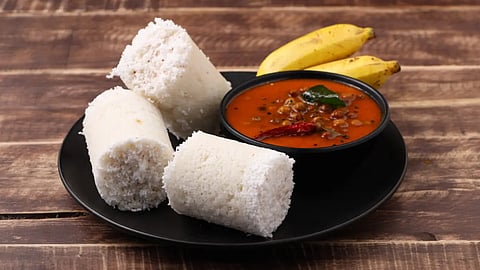It was a quiet summer morning. Other than the occasional honking of some hurried drivers, the streets of Kerala were not yet in their usual maze-like element. Or perhaps that conundrum was only reserved for Kochi.
In Search Of The Malabar Parotta
In search of the Malabar parotta, I accidentally chanced upon one of the best meals I’ve ever had
I glanced at my phone to check the time, almost 9. With an early start to the day, I had now been on the road for about 3 hours. My destination? The backwaters of Kerala before I further went ahead to Gokarna for the next leg of my journey. But before I hopped onto a boat for a long, calming ride, hunger pangs weighed in and my quest for an authentic south Indian breakfast began.
For the longest time, I was mistaken in my thinking — that only idli, dosa, sambar and vada were the beginning and the end of south Indian cuisine. That was until I spent one whole year with peers from various south Indian states decoding the cuisine that changed every few kilometres — and not only the dishes but also the spice mixes as well as the preparations. And one thing that I had grown really fond of? The Malabar parotta with curry. And I had been told that the delicacy was a common one and can be found at even the smallest eateries in the state. And I set my mind on the same for breakfast.

After nearly forty-five minutes of driving in circles, talking in hand gestures and looking at the closed shutter of shops that boldly advertised the parotta, I gave up. I tried to convince myself that perhaps it was too early for a parotta. And by now even my stomach was rumbling. A few more bends and curves later, atop a hillock, under the canopy of trees was a tiny outpost, with people queuing up outside with small cups of tea and their early morning dose of the news. I was slightly apprehensive but decided to walk in.
A meek, old man showed us to our table and in a quick second was ready to take my order. As opposed to a paper menu, the day’s specials were listed on a blackboard with the price indicated against each item. But all in Malayalam. Understanding my lack of ability to read and speak the language he fetched a small little boy, who in broken English phrases asked me what I’d like. Slightly dejected by the parotta situation I said I’ll take whatever with a cup of ginger tea on the side. He quickly communicated to the old man, who, via the boy, enquired about my spice tolerance and with a warm smile gestured me to wait.

Nearly ten minutes later he came, along with a saree-clad woman just behind him, and their hands full. The small table now smelled of a warm meal, spices, and with hints of fresh ghee somewhere. I instantly recognised the sambar and the neer dosa. The third dish on the table was puttu, a very common breakfast item in Kerala, I was told. The two of them — proud owners of the place — smiled warmly at me and waited in anticipation for me to take the first bite. And that moment became the highlight of Kerala for me. The sambar was tangy and rich in flavours, the dosa melted in my mouth and the puttu was a noble discovery. That simple meal, cooked with an exchange of barely two words and mostly hand gestures between me and my servers turned out to be one of the best I’ve had to date. God’s Own Country definitely has some surprises up its sleeve — or rather its hillocks.